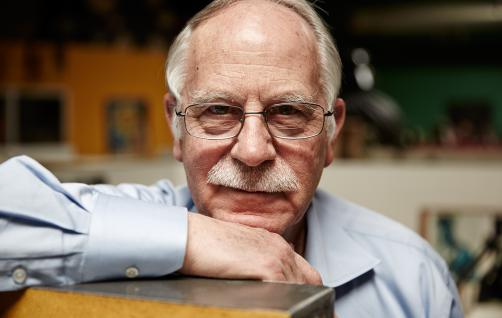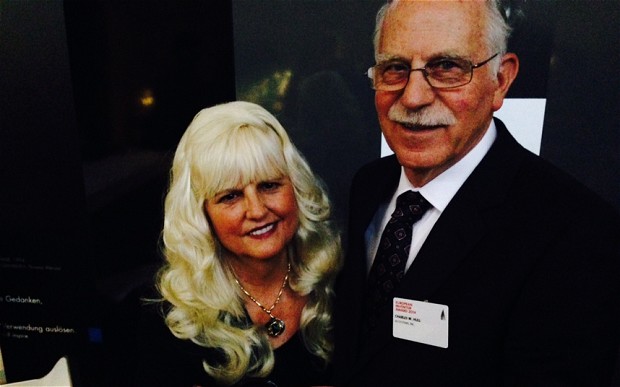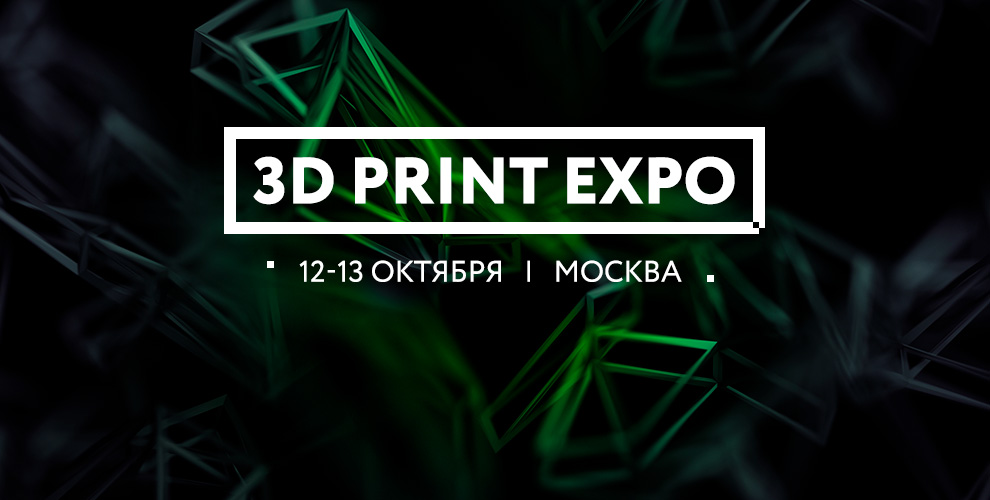How Chuck Hull Invented 3D Printing

3D printing was born in 1983 - much earlier than people began to use the World Wide Web en masse. But the Internet has long become an everyday part of life, and additive technology still cannot be called widespread.
At the same time, the inventor of 3D printing, Chuck Hull, believes that we have already passed the period of HYIP and are only now beginning to understand the real field of application of technology. This post is about how Chuck (Charles) Hull invented and patented laser stereolithography in a small utility room and how he now evaluates his invention.
Spoiler: like industrial robots , the auto industry greatly helped the development of 3D printing.
Countertops and Prototyping
It all started in the 80s. Then Chuck worked as a technologist at the California Ultra Violet Products. The company produced a UV curing resin for countertops. There was no question of high speed of work - it took months to develop and test even small parts. Chuck’s responsibilities as responsible for organizing the production process included prototyping. The inventor was looking for a method that would allow him to speed up the process.
One of his ideas was to apply several hundred layers of plastic and give them a certain shape using ultraviolet radiation. It would have turned out relatively cheap and fast in creating a prototype. With this idea, he went to the leadership of UVP. Chuck, of course, was not allowed to be engaged in the invention during working hours - but they allocated space and equipment.
After a year of overtime, the inventor created the first prototype electrolyte 3D printer. He worked with photopolymer - a substance that can change from a liquid to a solid state under the action of ultraviolet rays. Hull learned how to write code to program the printer to create a prototype of a certain geometric shape. The first 3D printed object was a small plastic cup.

The first 3D printer SLA-1
“Get dressed and come to the lab right now.”
The night when the discovery was made was forever imprinted in the memory of Chuck's wife, Antoinette Hull. In an interview for The Telegraph, she even names the exact time - 20:39 on Wednesday, March 9, 1983.
“I was at home that night, and I had to look at my watch when the phone rang,” she said. "I was already in my pajamas and getting ready for bed, but Chuck was still working."
“Get dressed and come to the lab right now,” Chuck said by phone. She got into the car and arrived at the lab - a small room, which Ultra Violet Products allocated to Hull for research.
In it, Antoinette saw the first 3D-printed object in the world. “Holding this strange detail in his hand, he said that he did it and the world will never be the same. That night I knew that he had achieved something grand. ”

Chuck Hull and his wife
The company where Chuck worked did not have the funds to finance the development. He recalls: “I received a patent for a 3D printer in '86. And here I come to the head of the company and say: “We need to find commercial use for this”. To which he replies: "Of course, but we cannot afford it." I had no choice, so I decided to create my own company. This was the beginning of 3D Systems. ” The first customers of his company were General Motors and Mercedes-Benz.
The company is still working. Chuck, who is now 79 years old, too. “My job is too interesting to quit,” he once said in an interview with CNN. In anotherHe gave more details: “In the late 90s I really retired. A new leader came to my place, and about three months later he called me and said: “Chuck, everything is bad. Can you come back and help with the solution of some technical problems? ”Since then I have been there again, continuing to do interesting things.”
Now 3D Systems focuses on programmable injection molding systems that will allow printing of objects without pre-designing forms. In addition to working in 3D Systems, Chuck gives lectures and speaks at conferences. For example, he became one of the main speakers at last year’s ASME - the international engineering congress.
Chuck Hull remains a very humble man. In 2014, the European Patent Office awarded him the prize for the best inventor working outside Europe. To this he answered only: “I am pleased to receive recognition of my merits. I worked hard and a lot, which is what I am going to do next. ”
He rarely communicates with the media. Below is one of his few interviews given by Industry Week . It is 2013, but not fully translated into Russian. In it, Chuck Hull told how he himself did not believe for a long time in the commercial success of his invention and whether it would ever be able to compete with traditional production.
You invented stereolithography in 1983. After 30 years, the market of additive production began to grow rapidly. It seems to people that this is some kind of new phenomenon. What do you think about this boom? Is it too late to start?
When we first started doing 3D printing, I could not imagine that it would become so popular.
It seemed to me that this path would take about 25 years, if not more. Such is the story of all inventions. There is no such thing as you invented a thing like a 3D printer, and a crowd of customers immediately began to burst through your door. It takes a long time to understand what you have invented and how it can be improved.
3D printing is not easy. You see the finished device. You think that it is very easy to use, but it is not. We in 3D Systems have been improving the first printer for 10 years. During this time, managed to go the way from the idea to the realization of the finished device in the industrial field.
But the last few years have surprised me. The fact that people recognized 3D printing as a common trend certainly came as a surprise.
When did you get the idea to create 3D printing? How did you come up with the stereolithography method?
I started off as a design engineer. The development of new molded plastic parts, which we were engaged in, was a very time consuming and expensive process. First, you designed the appearance of the part, made the drawings, discussed everything with the toolmaker who made the mold for the plastic part. Then this form was sent to the caster who made the part. The whole process took 6-8 weeks.
Production took a lot of time, besides the first part turned out was never perfect. She had to redo and re-run the production cycle. Many months passed before you received a part that can be tested.
Naturally, we tried to do something about it.
I decided to check if I can think of a way to get this first part faster so that all repeated cycles go through quickly and then quickly get the final version for production.
I went through a bunch of ideas that didn't work, and then I came to the conclusion that it became stereolithography. March 9, 1983, I produced the first part with this method.
Then you filed an application for a patent obtained in 1986 and became a co-founder of 3D Systems. But who were your customers? Have any of the industries seen the potential at such an early stage?
When we started the company, we immediately sent “scouts” to see if there was any interest from the industry. And he was. In fact, the interest in prototyping was huge, mostly from the automakers.
Auto companies at that time tried to produce high quality cars. American concerns at that time were quite cumbersome. They could not quickly produce new models, and the quality of production lost in global competition.
Therefore, they had a huge interest in any technology that could improve the situation. We immediately began to move in this direction, to develop technology for the automotive industry. Soon after, many manufacturers went the same way.
Also in those years, we developed methods for prototyping metal parts. Our technology was supposed to offer an alternative to the traditional casting method of lost wax, and this was the first serious branch of the prototyping of plastic parts.
We called the developed method Quick Cast. He allowed to quickly pour metal parts from various alloys, and it is still used. Mainly in the aerospace and related industries.
Now that manufacturers and buyers have realized the full value of 3D printing, what will happen next? Will she ever be able to compete with traditional production?
I am not a futurist and I do not have a crystal ball predictor - I do not know what will happen next. But I know that when enough smart people work on something, it always gets better.
The main advantages of additive technologies now are the fine tuning and the ability to work with complex structures. If your manufacturing process needs a lot of parts or you need parts with a lot of different parameters, 3D printing may be useful to you.
Medical use is natural for 3D printing, because all bodies are different. When you try to do something for your teeth, for example, this thing will be different for different patients. The same applies to the knees and other joints.
If you are looking to the future of 3D printing, these are probably parts with complex shapes and patterns, even with large production volumes. The speed and economic benefits of 3D printing are constantly increasing. So, it is becoming more and more likely to compete with traditional production.
Looking back at these 30 years - what would you call your greatest achievement without taking into account the technology itself?
Back in the 1980s and 1990s, it was clear that production would gradually leave the country. It concerned not only the USA - all went to the countries with a cheap labor. I always thought it was bad. In my opinion, production must be a key ability, especially for the USA. Today, the return to production in the country is associated with higher technological capabilities. I love the fact that 3D printing and digital production contribute to this. On October 12-13, we will hold in Moscow an exhibition of additive technologies and 3D scanning - 3D Print Expo. She will be the sixth in a row.

This time we changed the format and concentrated on practice. There will be no conference this year - there will be an exhibition and a lecture hall. Of course, there will remain master classes, a gallery of 3D printed objects and drawing with 3D pens.
Details and the program are looking for on the official website .
